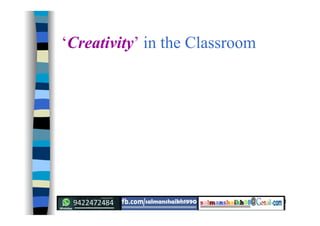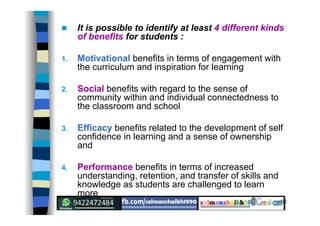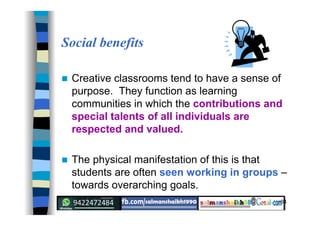This document discusses creativity in the classroom and defines what makes a classroom creative. It begins by explaining that a creative classroom focuses on opportunities provided by the teacher rather than seeing creativity as a personality trait. It then outlines three dimensions that define a creative classroom: creative approaches to content, creative teaching and learning practices, and supporting student creativity. Several strategies creative teachers use are described, such as situating learning in a meaningful context. The document also discusses benefits students gain, such as increased motivation, development of thinking habits, and stronger understanding. It concludes by emphasizing that developing a creative classroom requires ongoing effort to incorporate new techniques and take risks.










































